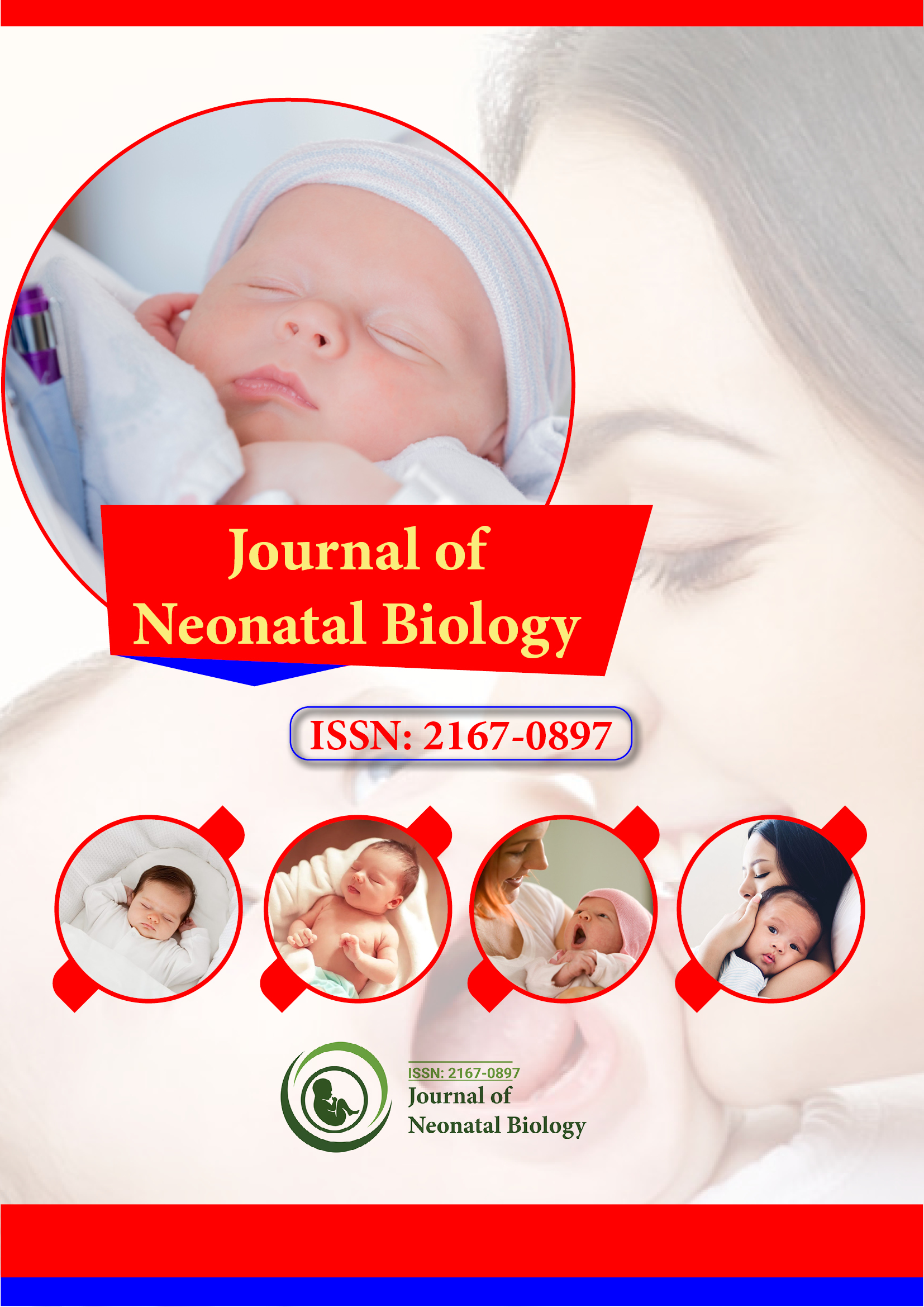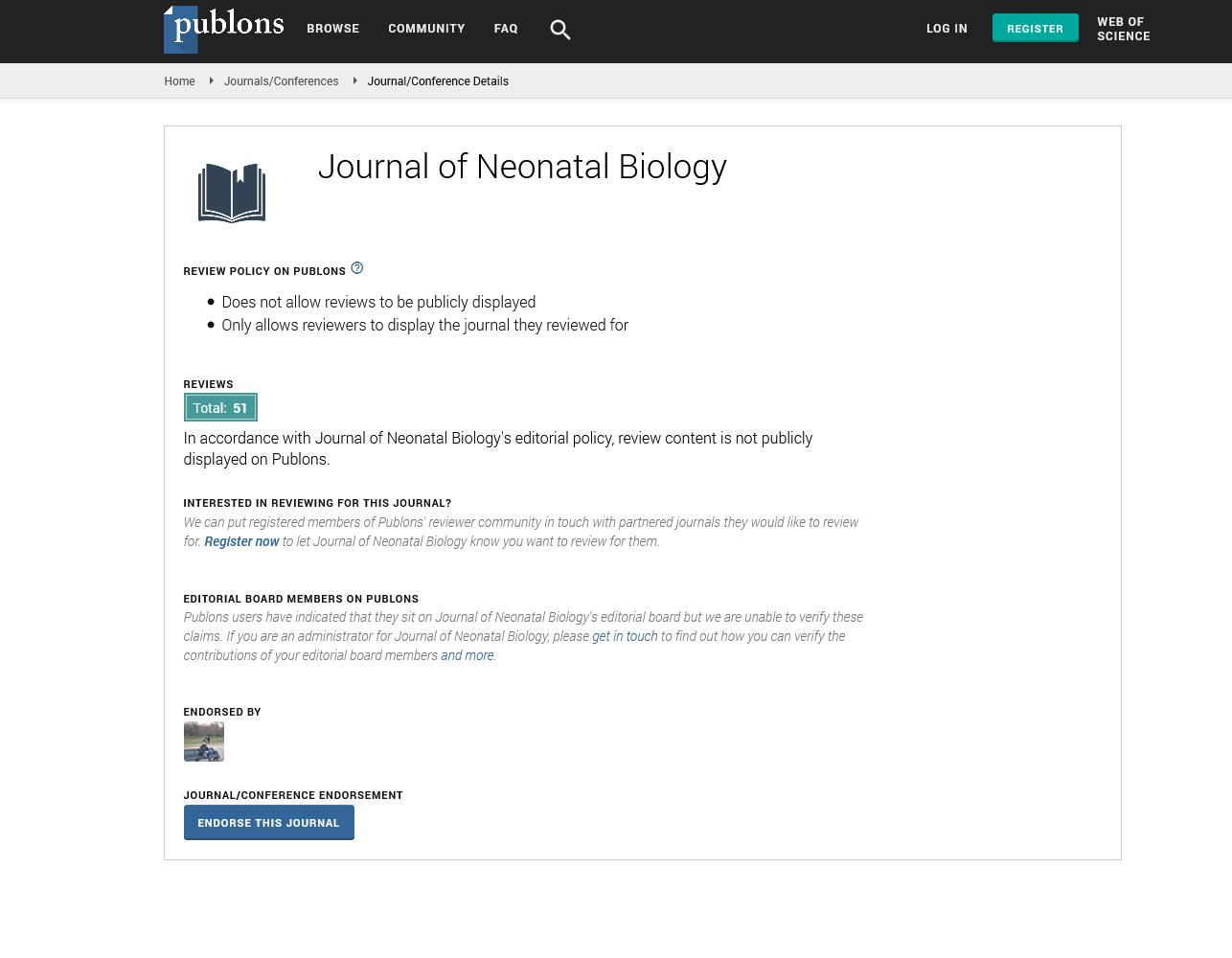PMC/PubMed Indexed Articles
Indexed In
- Genamics JournalSeek
- RefSeek
- Hamdard University
- EBSCO A-Z
- OCLC- WorldCat
- Publons
- Geneva Foundation for Medical Education and Research
- Euro Pub
- Google Scholar
Useful Links
Share This Page
Journal Flyer

Open Access Journals
- Agri and Aquaculture
- Biochemistry
- Bioinformatics & Systems Biology
- Business & Management
- Chemistry
- Clinical Sciences
- Engineering
- Food & Nutrition
- General Science
- Genetics & Molecular Biology
- Immunology & Microbiology
- Medical Sciences
- Neuroscience & Psychology
- Nursing & Health Care
- Pharmaceutical Sciences
Opinion Article - (2022) Volume 11, Issue 3
Challenges in Newborn and Infants in Immune System
Gunjan Baweja*Received: 01-Mar-2022, Manuscript No. JNB-22-16169; Editor assigned: 04-Mar-2022, Pre QC No. JNB-22-16169(PQ); Reviewed: 18-Mar-2022, QC No. JNB-22-16169; Revised: 24-Mar-2022, Manuscript No. JNB-22-16169(R); Published: 01-Apr-2022, DOI: 10.35248/2167-0897.22.11.338
Description
The first few months of life reflect a very difficult time for newborns, as the naive immune system is attacked by a variety of pathogens, symbiotic organisms, and other foreign bodies. Infants' immune responses are often suppressed or altered, leading to increased post-infection susceptibility and illness. This is the result of qualitative and quantitative changes in the response of multiple cell types throughout the immune system. This section outlines the challenges associated with the neonatal response to viral respiratory pathogens and outlines the hurdles and advances in vaccine-mediated defence. Changes in the newborn's immune system span the congenital and adaptive arms that are important for eliminating viral infections. Defects associated with the natural immune system are diverse, including decreased congenital pattern recognition receptor activity, decreased interferon production from Plasmacytoid Dendritic Cells (PDCs), and Conventional Dendritic Cells (CDCs). Poor maturation, decreased cytokine production, decreased cell migration impaired feeding and NK cell dysfunction. Adjustment disorders include T cell activation and decreased effector function, altered T cell differentiation, impaired B cell differentiation and survival, and decreased antibody quantity and quality. Together, these properties of the newborn's immune system lead to impaired protection against viral infections and illnesses.
Infants have limited exposure to antigens in the womb to induce adaptive immunity. Therefore, they are believed to rely heavily on the innate immune system to protect against infection. Toll-Like Receptors (TLRs) are involved in the recognition of infant-related microbial pathogens such as Group B streptococci, Listeria monocytogenes, and RSV. Tobias Kollmann (Vancouver, Canada) studied TLRmediated cytokine production by mononuclear cells and showed differences in blood samples from newborns (0-1 months), infants, and adults. He showed that infant blood monocytes produce less interferon (IFN-a), IFN-g, and interleukin 12 subunit p70 (IL-12p70) than cells of adult origin. However, the production of these cytokines increases rapidly between birth and 1 to 2 years of age. Infant cells, in contrast, exhibit greater ability to produce IL10 and heavy IL-17- producing helper T cells (TH17 cells)-promoting function in response to TLR stimulation through the production of IL-6 and IL23. In addition, individual infant cells are less capable of simultaneously producing multiple cytokines in response to TLR agonists than adult cells. That is, infant cells are less multifunctional. The predominance of TH17-like patterns combined with substantial IL-10 production may contribute to reduced T-helper type 1 (TH1) response, increase susceptibility to intracellular infections in infancy, and reduce vaccine response. Understanding the molecular mechanisms that regulate the pattern of cytokine expression by infant congenital cells is needed to develop protective measures such as vaccines against this population.
The adaptive immune system is composed of cellular and antibody responses, and the development of adaptive immune cells in early childhood is another under-studied area of study. Like RTEs, transitional B cells are functionally more restricted than more mature naive B cells. Therefore, the predominance of B and T cells during transition may affect the susceptibility of infants to infections. Further studies investigating the function and phenotype of such transitional epithelial cell populations will define and elucidate their role in total B and T cell function in infants. Studies of cellular responses suggest that infants can most often elicit T-cell responses. However, the quantity and quality of responses may differ from those seen in adults. For example, the CD4+ T cell response is not a CD8+ T cell response and progresses more slowly in infants than in adults after primary infection with cytomegalovirus or herpes simplex virus. In addition, responses to several vaccines, including vaccines against hepatitis B virus and oral poliovirus vaccines. Reduces TH1 activity and targets TH2 function. Although there is evidence that many cytokines are present in response to the vaccine, a meaningful good correlation of protective cell-mediated immunity has not yet been defined. The underlying mechanisms of the functionally different responses of infant T cells are not well understood, but can be multifactorial. The susceptibility of newborns to serious illnesses after respiratory virus infection is a serious public health concern. Vaccines for newborns are not yet available for the most clinically relevant pathogens (influenza virus, RSV, HPIV, RV). Therefore, the current focus is on maternal vaccination to protect infants from influenza virus and RSV. Vaccines against these two pathogens for adults have been approved or are in clinical trials. Maternal antibodies have advantages, but at lower levels, children become more and more vulnerable in the first few months of life. Therefore, supplementing maternal vaccination with early direct vaccination of the baby is an attractive approach. Early vaccination allows the administration of priming and booster doses of vaccine as needed to achieve antibody protection levels in infants. Although many experimental adjuvants for newborns are promising, a deeper understanding of the immune system of these individuals is important for the development of optimal adjuvants and vaccine delivery approaches. This is facilitated by using an animal model that best reflects the human neonatal immune system. The use of these models is complemented by a direct analysis of newborn humans. The advances in experimental approaches allow increasingly more information to be garnered with the limited sample that can be obtained from these individuals. Although the challenges are significant, they are not insurmountable, and we are continually nearing the goal of developing vaccine approaches that can protect young infants from infection and disease.
Citation: Baweja G (2022) Challenges in Newborn and Infants in Immune System. J Neonatal Biol. 11:338.
Copyright: © 2022 Baweja G. This is an open-access article distributed under the terms of the Creative Commons Attribution License, which permits unrestricted use, distribution, and reproduction in any medium, provided the original author and source are credited.

